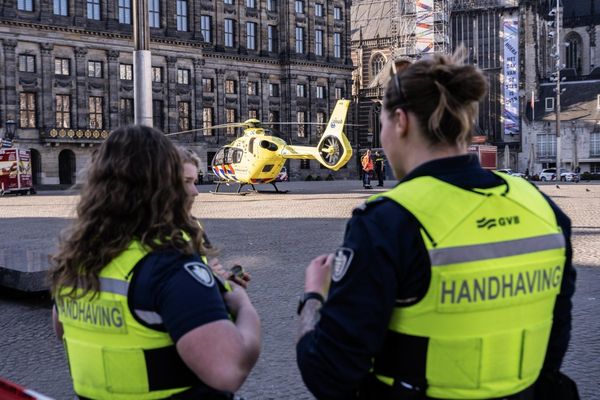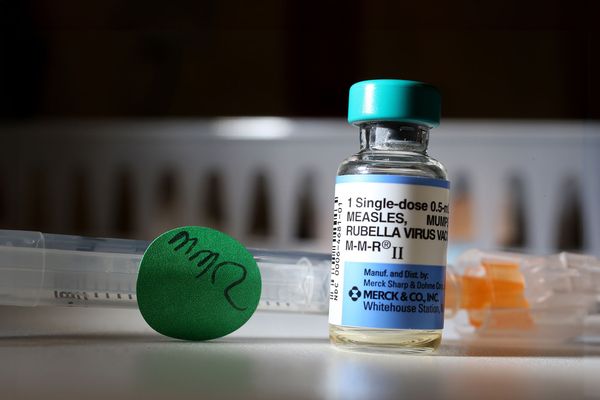
By 4.30am, the streets around Yoon Suk Yeol’s hilltop residence felt like rush hour, packed with police and protesters despite the early hour.
Roads were completely sealed off and thousands of officers were in position on the freezing winter morning, while hundreds of pro-Yoon supporters chanted aggressively while clutching red light sticks and American flags.
Behind multiple police cordons, segregated for security, a smaller crowd of anti-Yoon demonstrators had secured positions closest to the gates.
Tea and instant noodle stations were set up, serving both sides of the political divide.
“Stop the steal”, read banners in English and Korean from Yoon’s supporters, referring to unfounded claims of election interference used to justify the martial law, while across came chants of “Arrest him now!”
As dawn broke and temperatures rose slightly, the anti-Yoon camp’s mood turned almost festive: singing, dancing and broadcasting live scenes from multiple angles as the operation to arrest South Korea’s impeached president began in earnest. It was buzzing.
Unlike their failed attempt earlier this month, investigators came prepared. Television footage showed investigators and police scaling the compound’s walls with ladders. Others reportedly approached through mountain paths behind the residence.
Inside, clashes reportedly broke out with security personnel, and at least one person was injured and evacuated by paramedics.
“The security staff aren’t responding as aggressively as feared”, noted opposition lawmaker Han Chang-min at the scene. “Police are proceeding while trying to get maximum cooperation”.
Headlines began flashing that the compound’s defences were slowly collapsing.
“Come out! Come out!” the anti-Yoon crowd cheered. “Go get him!” Despite the gravity of attempting to arrest a sitting president, there was an air of inevitability.
For 43 days since declaring martial law, a move that has thrown the country into political chaos, Yoon has remained defiant in his fortress-like residence, protected by loyal security forces. But now, his castle was crumbling.
‘You said you would protect him’
At about 10.30am, police suddenly lined the roads further. A convoy of vehicles emerged and departed. Within moments, euphoria erupted from the pro-impeachment crowd: “They got him!”
Within a minute, the police lines suddenly melted away as the compound’s main gates stood open. Hundreds of investigators and police streamed out like a river. From within their cordoned area, jubilant protesters shouted “Thank you so much!” and “You did a great job!” at the departing officers. Then they went back to celebrate to the tunes of K-pop.
On the other side, Yoon’s supporters were standing in stunned silence. Some collapsed in tears. “How can this be?” one woman wailed. Another man, visibly distraught, swore viciously at the crowd: “You said you would protect him, but what did you do?”
Minutes before his arrest, Yoon had released another defiant message. “As president who must protect the constitution and legal system of the Republic of Korea, my compliance with these illegal and invalid procedures does not mean I accept them. It is only to prevent unsavoury bloodshed”.
He now holds the distinction of being the first sitting South Korean president to be arrested, a dramatic fall for a leader who just weeks ago had attempted to impose military rule on his country.
The morning’s events played out like a live television drama, with every development broadcast across multiple news channels.
As his convoy arrived at the anti-corruption agency’s offices in Gwacheon, investigators prepared to question him over insurrection charges that could carry the death penalty.
Yoon faces 48 hours of questioning, after which investigators must decide whether to seek a warrant to detain him for up to 20 days or release him. Meanwhile, the constitutional court continues deliberating his impeachment. Technically, it could still reinstate him as president.
For now, though, many South Koreans were simply processing the extraordinary scenes they had witnessed. The siege was over. The president was in custody.







